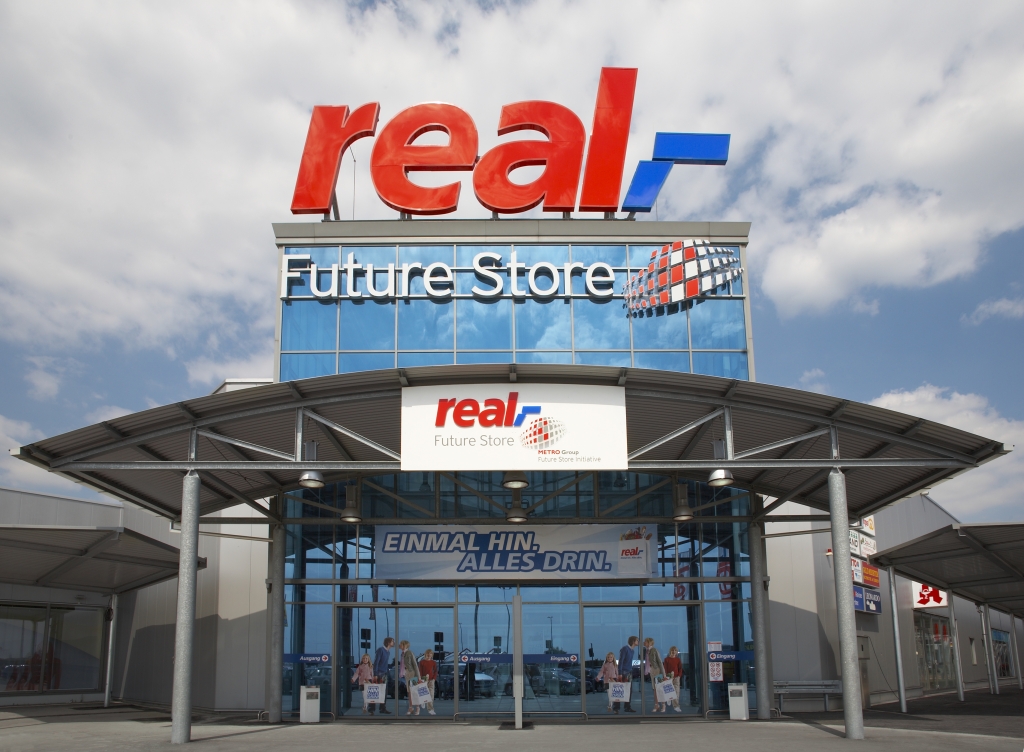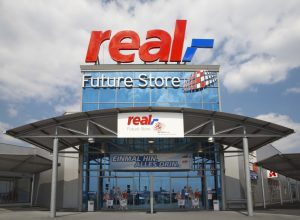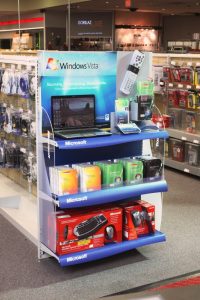A shopper walks into a store and a traffic monitoring system notes her presence and plots her journey. She picks up an item from a shelf and a marketing video about the item begins instantaneously on a nearby display.
She puts the item down somewhere on the other side of the store, but the staff is able to locate it right away and return it to its original shelf position. She takes several garments into a dressing room and they’re automatically identified (preventing possible theft). The dressing room mirror identifies her item and displays images of other apparel she might be interested in – and precisely where in the store to find them.
She makes her purchases, without the need for the items to be individually scanned, and the store’s inventory control is instantly notified that the items need to be restocked.
All these store-of-the-future elements are already here, courtesy of Radio Frequency Identification (RFID) tagging. And that’s only the beginning of the possible applications. The technology is just starting to make its way into retail, but it’s moving fast. And while it’s now being adapted to fit into existing store environments, it won’t be long before the reverse happens: Store design will have to adapt to the technology.
How it works
RFID is enabled by tiny transmitters and receivers that send and detect radio signals, and they can be implanted almost anywhere—on merchandise tags, in the items themselves, on packaging, on shelves and racks or other display apparatus and at the cashwrap.
“You can then read the tags with something as small and portable as a hand-held reader and have a very small footprint,” explains Dr. Venkat Krishnamurthy, chief technology officer of OATSystems Inc. (Waltham, Mass.) and vp of advanced technologies at its Thorofare, N.J.-based parent, Checkpoint Systems Inc., both providers of electronic security and merchandise-management solutions to retailers. “At the other extreme,” says Krishnamurthy, “you could wire up locations to provide real-time inventory all the time.” RFID provides what barcodes don’t: an individual identity for each item. Each identical bottle of shampoo on a store’s shelf has the same barcode and a complete inventory can only be done by hand.
Advertisement
Not surprisingly, most of the interest from retailers so far has been in the areas of inventory control and supply chain management, where the applications are obvious and relatively easy to implement. But Krishnamurthy sees that changing.
“We’re starting to talk to some visual merchandising people,” he says. “I think that they and the loss-prevention folks generally haven’t been operating in a collaborative way. The visual people would create a display and then the loss-prevention guys would say, ‘How are we going to protect this?’ But now we can head into a more collaborative process.”
“To deploy RFID technology,” adds Jim Donaldson of technology provider Impinj Inc. (Seattle), “there should be consideration of how things are going to be laid out. A retailer doesn’t just plug the thing in and everything works. There’s a lot of tweaking, just like an architect designing a retail space. Among the considerations are the materials being used, the distances between things and where the radiofrequency signals are going to be routed. And you don’t want a bunch of wires running around.”
Indeed, retailers will want what they’ve always wanted: attractive, highly mobile fixtures and inviting POS areas. To that end, Impinj is already investing in RFID-ready apparel displays. “If you want a smart shelf that’s giving you inventory information,” explains senior director of business development Larry Arnstein, “you’ve got to find a way to route power.” Yet RFID can also make the aesthetic challenge easier. “With RFID, you can put a little thing [RFID antenna] underneath the surface of the checkout counter and eliminate almost all the accoutrements and paraphernalia associated with the checkout process,” Arnstein says.
There will also be store features possible that focus on the customer relationship, such as information kiosks, the “smart mirror” and more interactive in-store marketing displays. “Some features will be visible, others behind the scenes, but they all make the shopping experience better,” predicts Krishnamurthy. “I think the most fundamental benefits are going to be greater understanding of customer behavior and a reduction of response time to the customer’s needs.”
Also, the use of RFID makes a whole new business model more feasible: vendor-managed inventory. “Let’s say Macy’s has a Calvin Klein shop,” says Arnstein. “They could agree that Calvin Klein would remotely manage the inventory in that area, automatically taking care of its own replenishment. If those items and fixtures are RFID-enabled, Calvin Klein has a lot more visibility, Macy’s has a lot less work to do and together they run a more efficient business.”
Advertisement
Where it’s headed
So far, European retailers have jumped ahead in the implementation of RFID technology, particularly German food giant Metro AG, which last year opened its newest “Future Store” in Toenisvorst, North Rhine-Westplalia, as a laboratory for new technologies. In North America, interest has been led by the apparel industry, with its constant turnover of fashion-focused merchandise, and, conversely, by Walmart. In 2003, the retailing giant set an ambitious goal for implementing RFID in its distribution centers, even requiring RFID tagging from every supplier, then scaled back those goals after encountering some resistance. Suppliers said it would be too expensive for them to implement. But Walmart hasn’t given up, and it remains bullish on the presence of RFID in its future.
Yet while some pilot programs are underway elsewhere – such as at trendy American Apparel – the use of RFID in the U.S. has barely begun. “Virtually none of our clients is are doing anything new with in-store technology,” notes Steve Lochte, president of Brand + Allen architects, which does design work for several luxury retailers. Likewise, grocery conglomerate Supervalu is focusing on a more centralized approach to basic pricing at the shelf: “Once we get our arms around that,” says vp of store design Sharon Lessard, “the idea of an RFID system may be more appropriate.”
Even tech-focused companies like Microsoft find that RFID technology has made its way to item-level retail only in niche situations. “A big inhibitor to item-level breadth has been the total cost of ownership for such solutions, starting with the tagging cost, but the costs are continuing to decline quickly,” says Tim Gruver, Microsoft’s director of worldwide technology for retail. He also notes the difficulty thus far in measuring the technology’s ability to drive brand value or close the sales loop.
The impact on visual merchandising and on store designs, therefore, has yet to be determined. But the potential is enormous and the direction of the change is clear. “The available technology isn’t the obstacle at this point,” says Krishnamurthy. “The challenge lies in understanding how you would use it in your specific environment.”
Tom Zeit is a contributing writer based in Cincinnati.
Advertisement
PHOTOS COURTESY OF METRO AG, DUSSELDORF, GERMANY; JEREMY DUNHAM, PORTLAND, ORE.


 Photo Gallery2 days ago
Photo Gallery2 days ago
 Headlines1 week ago
Headlines1 week ago
 Headlines2 weeks ago
Headlines2 weeks ago
 Sector Spotlight2 weeks ago
Sector Spotlight2 weeks ago
 Headlines1 week ago
Headlines1 week ago
 Headlines3 days ago
Headlines3 days ago
 Headlines2 weeks ago
Headlines2 weeks ago
 Designer Dozen1 week ago
Designer Dozen1 week ago
















